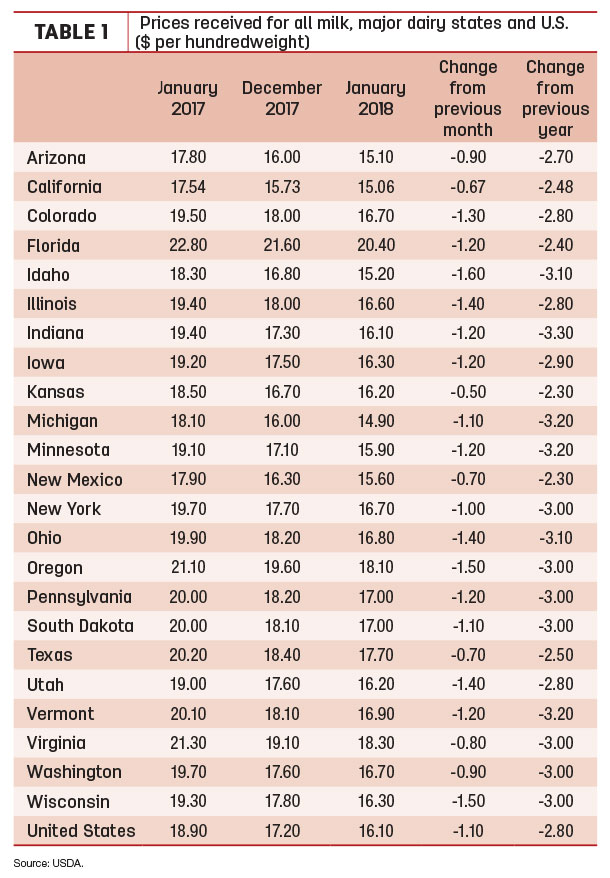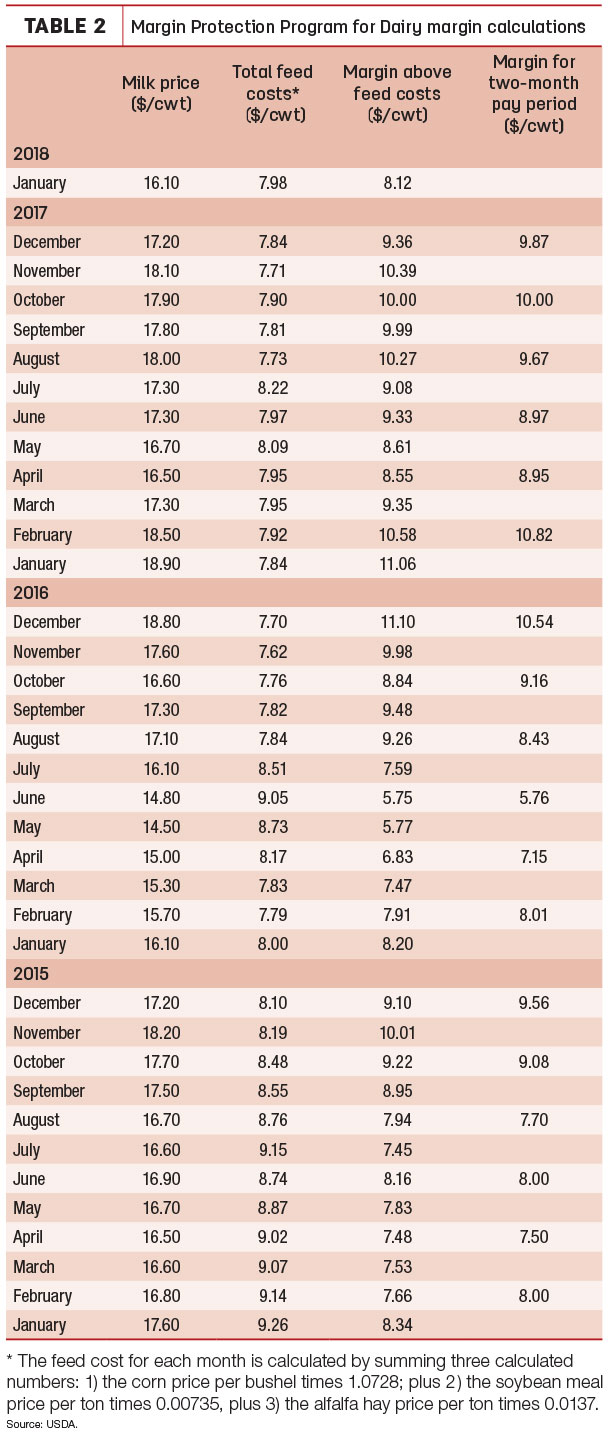The reopening of enrollment for 2018 participation in the Margin Protection Program for Dairy (MPP-Dairy) took on additional urgency with the release of milk price and feed cost information for January. Meanwhile, dairy cows culled in January 2018 were the highest monthly total in five years.
No information on MPP-Dairy enrollment yet
As of Feb. 27, the FSA was still finalizing details before reopening the 2018 enrollment period for MPP-Dairy. Wayne Maloney, in the FSA public affairs office, said USDA staff were putting the final touches on enrollment details and preparing a fact sheet concerning provisions included in a federal budget bill, signed into law Feb. 9. The sign-up period will be for 90 days, but exact dates have not yet been announced.
Read: No news regarding MPP-Dairy sign-up yet; Peterson unveils potential change in Farm Bill
January milk prices tumble
The handwriting of lower milk prices has been on the wall for a while, with signs of weakening at the end of 2017. On Feb. 27, the USDA National Ag Statistics Service (NASS) released its monthly Ag Prices report, showing the U.S. average milk price was $16.10 per hundredweight (cwt) in January 2018, down $1.10 from December 2017, $2.80 less than January 2017, and equaling the 19-month low of July 2016.
Among the 23 major dairy states (Table 1), January prices were $1 or more less than December 2017 in 16 states, led by a $1.60 decline in Illinois and $1.50 drops in Oregon and Wisconsin. The average price dipped below $15 per cwt in Michigan, which held the distinction of the lowest state average. Florida’s average of $20.40 per cwt remained the nation’s high.

Compared to a year earlier, January 2018 milk prices were down $3 or more in 12 states.
MPP-Dairy margin shrinks
The USDA Farm Service Agency (FSA) also released the MPP-Dairy milk income margin for January and, with the lower milk price, the U.S. average margin over feed costs slipped to $8.12 per cwt. While still above the highest MPP-Dairy insurable trigger level of $8 per cwt, it was the thinnest monthly margin since July 2016 (Table 2).

The effect of lower milk prices was compounded by slightly higher feed costs. National average prices for corn ($3.29 per bushel, up 6 cents per bushel from December and the highest since July 2017), alfalfa hay ($152 per ton, up $4 from December and the highest since October 2017) and soybean meal ($322.59 per ton, up $3.37 and the highest since July 2017) resulted in total feed costs of $7.98 per cwt of milk sold, up 14 cents from December.
Based on milk and feed futures prices as of Feb. 27, the Program on Dairy Markets and Policy projects monthly MPP-Dairy margins will continue to decline, falling near or below below $7 per cwt from February through June.
January dairy cow slaughter highest in five years
U.S. dairy farmers are milking a lot of cows, but they also culled more cows in January 2018 than in any month in five years, according to USDA records.
The culling increase reflects farmers holding onto cows through December, a month when cow prices are generally weakest, and the shrinking milk income margins.
For January 2018, federally inspected milk cow slaughter was estimated at 289,800 head, 42,500 more than December 2017 and 20,800 more than January 2017. It was the highest monthly total since January 2013, when 296,900 head were removed from milking herds.
The USDA’s latest milk production report indicated there were 9.405 million cows in U.S. dairy herd in January 2018, up from 9.369 million head the same month a year earlier. Based on the slaughter estimates, about 3.1 percent of the herd was culled in January 2018, compared to 2.9 percent in January 2017.
Read: U.S. milk output, cow numbers start year higher
January cull cow prices rise
Despite the high culling rate, U.S. average cull cow prices rose in January, although the increase was modest. Cull cow prices (beef and dairy combined) averaged $63.30 per cwt, up $1.30 from December, but 70 cents less than January 2017. ![]()

-
Dave Natzke
- Editor
- Progressive Dairyman
- Email Dave Natzke




